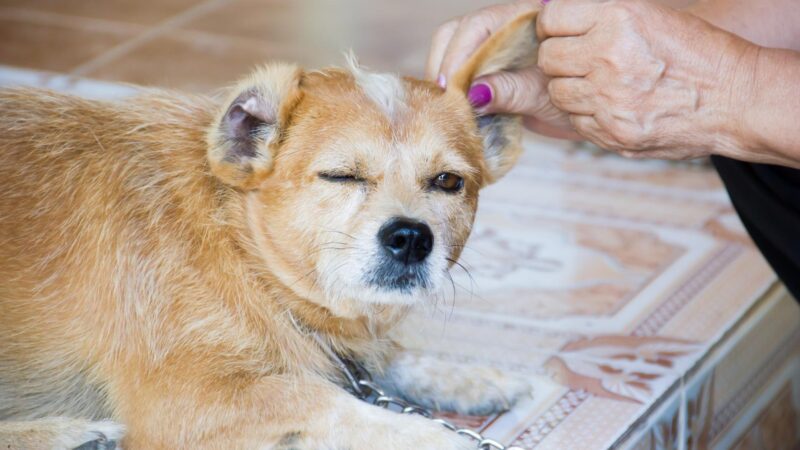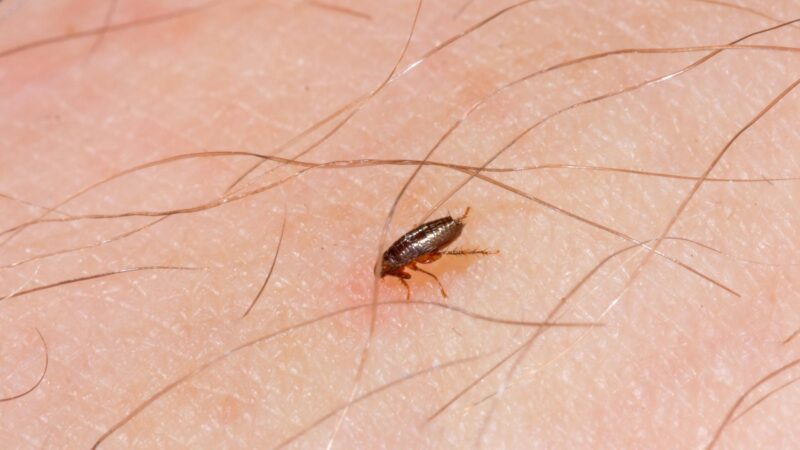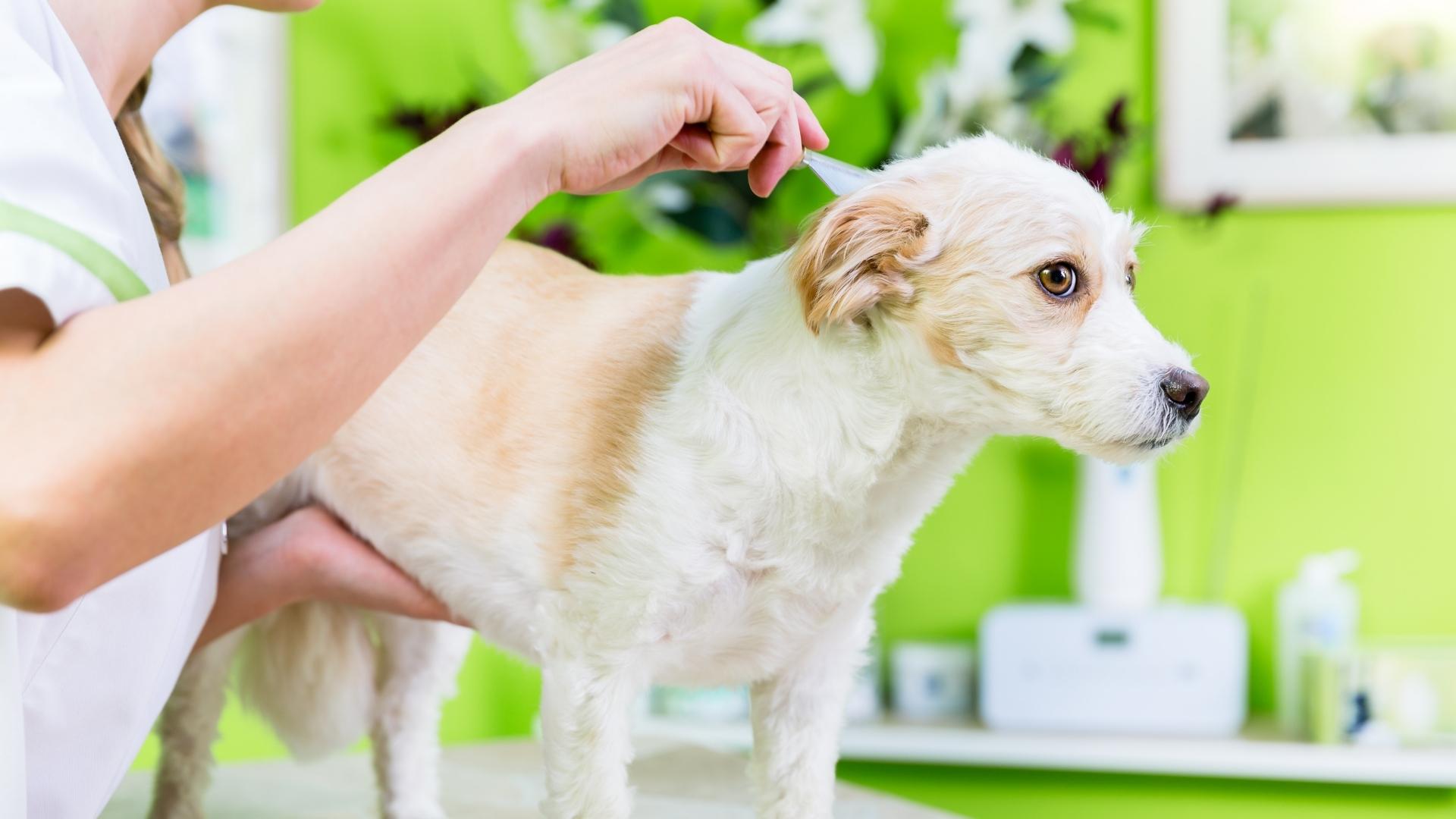Fleas are more widespread in cats and dogs than in humans. But since these animals are common pets at home, fleas also pose danger to public health.
These tiny ectoparasites also attack other small mammals such as opossums, raccoons, and rodents. Unfortunately, their waste can also cause health issues.
What is flea dirt, and what does it look like? Flea dirt is the common term for dried flea feces. They are mostly round, dark red speckles, and look like freshly ground black pepper. This is the blood that adult fleas suck from their animal host but was not digested completely. Flea dirt can be mistaken for other kinds of dirt.
The more blood fleas feed, the more feces they will produce. Flea larvae feed on flea dirt, which is also why you should get rid of them. But for you to succeed, you must know how to identify them properly and where to find them.
This guide has everything you should know about flea dirt. Read carefully from start to finish.
Table of Contents
How Do You Identify Flea Dirt?
Flea dirt is composed of flea waste and undigested blood from the host. Once water is applied to them, a red liquid will come out. Flea poop is the main diet of flea larvae.
They undergo three larval stages, and they cannot go to the next stage without it. Without them, flea larvae may still die within only a few weeks.
Related: What Do Baby Fleas Look Like? | Identification, Habitat, and Control
Where Can You Find Flea Dirt?

You can find flea dirt on the fur of your pets that have fleas, regardless of how many fleas they have. They are usually around the parts of your pet where fleas enjoy sucking blood.
This includes the tail, neck, back of the tail, hind legs, belly, and groin. To find them, observe which part of the body that your pet scratches heavily.
Flea feces are also likely to be on your pet beds, under rugs and carpets, and other areas where your pets love to sleep and rest.
If you allow your infested pets to stay on your bed frequently and for a long time, there is a very huge chance that flea dirt will accumulate on it. Soon after, you may also see some flea larvae.
Is Flea Dirt Harmful to Humans?

Flea dirt is not directly harmful to humans. People who will touch or get in contact with flea poop will not get sick. Fleas can only harm humans once they accidentally eat fleas infected with tapeworms called Dipylidium caninum.
However, this is more common to cats and dogs but is very rare to humans.
But while flea bites on people are not considered dangerous, flea dirt can also lead to some diseases. Cat scratch disease (CSD) can be transmitted to humans once a domestic cat scratches its poop and injects it into humans via scratches. This usually happens when that cat has cat fleas infected with the disease.
Some fleas also carry fleaborne typhus and can transmit it to humans through their feces. This occurs once the infected flea rubs its poop on an open wound, whether that wound is caused by flea bites or something else.
You can also accidentally inhale infected flea dirt or rub it to your eyes without your knowledge.
Does Flea Dirt Mean Fleas Are Dying?
Seeing flea dirt does not mean fleas are dying. It only means that fleas have been on that spot, or they are still there. Fleas release poop once they have already consumed a sufficient amount of blood from their host and digested it. The presence of flea dirt also suggests that flea larvae will soon arrive to eat them.
Does Flea Dirt Mean an Infestation?
Seeing flea dirt does not necessarily mean there is already a flea infestation. It only means that there are fleas on your pets or their bedding or under the carpets.
On the other hand, you may also not see fleas on your pets even if you find flea poop. This is because your pets have likely eaten them or dropped them off.
Is It Possible to Get Flea Dirt But No Fleas?
It is not possible to get flea dirt but no fleas simply because there will be no poop without adult fleas. However, you may not always see fleas near their poop. They are very excellent jumpers and can easily jump from one host or area to another if food is no longer available. Your pets might also have eaten them.
Adult fleas can have 10-15 blood meals a day. A study suggested that fleas can release about 0.77 mg of feces per day and that the average blood ingestion for fleas to turn into flea dirt is 6.97 ml. Females also poop more than males. This is also why if there is flea poop, there could be lots of fleas around or nearby.
What Are the Risks of Finding Dirt on Your Pet?

Finding flea dirt on your pet poses a health risk to them since it is a clear sign that your pets already have fleas. If ignored, flea bites on animals can lead to several health issues.
This includes losing fur, the possibility of having anemia due to blood loss, and developing skin diseases such as flea allergy dermatitis (FAD).
Pets eating fleas infected with tapeworm larvae may not cause severe health problems. But once these larvae grow into adults during digestion, they will be included in the pet’s poop, crawling out of their anus. Pets heavily infested with these tapeworms can also experience weight loss, lethargy, and loss of appetite.
Is Flea Dirt Hard to Remove?

Flea dirt alone is not hard to remove. Unlike animal poop, flea dirt has no foul odor, which means your nose will not be irritated. Despite being very tiny and can get stuck into your pet hair, flea feces are very easy to clean. Your pets also bite them off their fur, which is why flea dirt can also be found around your house.
How Do You Remove Flea Dirt?
The techniques for removing flea dirt from cats and dogs are not the same as removing them from carpets, rugs, and pet bedding. To begin with, insecticides can be toxic to pets. So, to help you remove flea feces from your pets and their favorite places, here are some natural but effective ways to do it:
- Bathe your pet thoroughly. Use a vet-formulated dog shampoo such as Vet’s Best Flea and Tick Advanced Strength Dog Shampoo.
- While bathing your pet, focus more on the infected fur, which your dog scratches the most. But still, check the other body parts to make sure all fleas and flea dirt are gone.
- Comb your pet with a flea comb that has very fine teeth. Flea combs such as Hartz Groomer’s Best Flea Comb don’t only kill fleas but also remove flea dirt.
- For better results when washing pet bedding, use very hot or boiling water. Wash your bedding, blankets, and cushions separately.
- Vacuum your entire house. This includes under the couches, furniture, chairs, along the walls, especially those areas where your pets visit frequently. Don’t forget to throw away vacuum bags.
- You might also want to mop your floor with hot soapy water.
What Should You Do to Prevent Fleas and Flea Dirt?
The best way to prevent flea dirt is to get rid of the existing fleas and to stop them from coming back. Preventing fleas is not as easy as you may think. There are lots of ways to avoid your pets from a flea infestation, and a single strategy may not be enough. Here are some tips on how to prevent fleas and flea dirt:
- Spray apple cider vinegar solution to your pets. It won’t kill fleas but will repel them, thus, reducing the chance of having flea poop.
- Sprinkle food-grade Diatomaceous Earth (DE) on infested areas. Don’t apply it directly to your pets. DE also does not work effectively on wet areas.
- Change pet bedding regularly and sanitize the area.
- Limit your dog from staying outdoors, especially during hotter days.
- Avoid your dogs from interacting with stray dogs.
- Always free your yard from fallen leaves and other debris.
- For your vegetation, use organic insecticides such as Southern Ag Natural Pyrethrin Concentrate.
- To help prevent fleas in your yard, apply non-toxic treatments such as Vet’s Best Flea and Tick Yard and Kennel Spray.
- For infested dogs, give them fast-acting oral treatments such as CAPSTAR Fast-Acting Oral Flea Treatment for Dogs.
- For infested cats, give them vet-recommended oral treatments such as CAPSTAR Fast-Acting Oral Flea Treatment for Cats.
- Prevent rats, mice, raccoons, squirrels, and skunks from entering your property. These mammals may also be carrying fleas.
Note:
Be extra careful when using insecticides with pyrethrin. Although they are safe for dogs, they are very toxic to cats. Also, don’t use cat products for dogs and vice versa.
For your pet’s safety, always consult a veterinarian before buying any flea control treatment. Make sure you read labels carefully before using them.
Summary
Flea dirt itself may not be a problem and can easily be dealt with. But if you take it for granted, you can expect a flea infestation shortly. Note also that in most cases, a combination of several flea treatment programs is necessary.
For severe infestations, seek help from a flea control professional immediately.